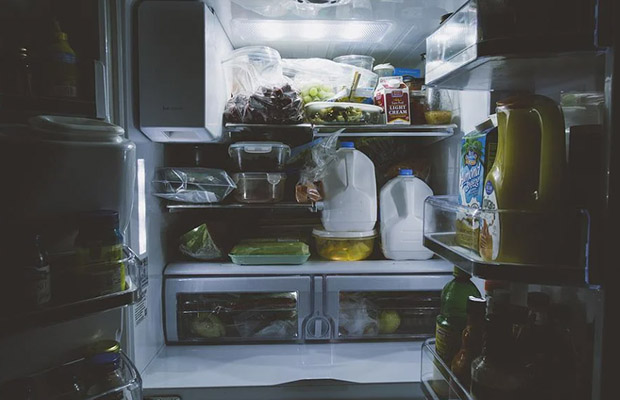You might be curious about how long does it take a refrigerator to get cold if you’re moving, plugging in a new refrigerator, or have recently restored electricity following a blackout.
For more details please read below.
Table of Contents
How Long Does It Take A Refrigerator to Get Cold?
Full-size refrigerators typically take 12 hours to reach the FDA-recommended temperature of 40°F for food safety. However, cooling times might range from 2 to 24 hours, depending on the brand and type of refrigerator. Mini refrigerators are available sooner because they chill down on average in 4 hours.
Whether you have a new refrigerator or you recently received power restored, the chilling time remains the same.
When Is My Refrigerator Cool Enough to Store Food?
For safe food storage, refrigerator inside temperatures should be at or below 40°F, according to the FDA. Freezers need to be set to 0°F.
A built-in control screen that shows the temperature digitally is found in some refrigerators. If not, purchase a fridge thermometer from Amazon (like this one here).
A thermometer is essential for many reasons, including installation and initial cooling down, but also because temperature changes could indicate a problem with your refrigerator. Therefore, it’s crucial to regularly check the temperature inside your refrigerator.
Things That Influence How Long Refrigerators Get Cold
What establishes how long it takes for a refrigerator to cool? There are a lot of factors, such as:
- Room temperature: The temperature in the room will have an impact on the cooling process. The recommended room temperature may be mentioned in your user handbook. The refrigerator may, however, burn out if it is kept in a warm area, such as a garage or outdoor kitchen. It constantly overstretches itself in an effort to stay cool, which results in longer, harsher work periods. You might need to spend money on fans, vents, insulation, or air conditioning if the refrigerator (or freezer) is in your garage in order to keep it cold. I also advise avoiding too much sun exposure.
- Size: While this isn’t always true, a larger fridge will often take longer to cool. While many of the larger refrigerators require about 24 hours to chill, only two of the mini-fridges on our list need only four hours.
- The temperature in the storage area: If a refrigerator were to be delivered to your home after being kept in a warm environment, such as a heated truck or storage space, the beginning temperature would be higher. As a result, it will take a little longer to reach 40°F.
- Age and condition: Older refrigerators chill down more slowly than modern versions because they are less efficient. Cooling periods might be slowed down by filthy, dusty, and blocked coils. Finally, the state of your refrigerator is important. The refrigerator won’t cool as quickly if some components aren’t functioning properly. The thermostat, obstructed air vents, a broken door seal, the condenser fan, and even an imperfect compressor are crucial components.
- Empty or stocked: Since there is less space for warm air and it is simpler for the refrigerator to maintain its cool temperature, a well-stocked refrigerator operates more efficiently. However, it would be beneficial if you didn’t put anything in the refrigerator while initially cooling down.
- How frequently you open the door: Keep it closed while the room is cooling. The cooling process is slowed down when the door is opened, allowing warm air to enter and cool air to exit.
How to Calculate The Cooling Time of Your Refrigerator
The best approach to get the cooling time for your particular refrigerator is to Google the manufacturer’s name, and model number, then read the user manual or installation instructions on the manufacturer’s website. Or choose a reputable retail website, like Lowes.com or HomeDepot.com.
When the installation manual opens, use Control+F to search for the word “hours” in your keyword. Instead of wasting 15 minutes reading the entire guide, doing this will assist you to find the section regarding cooling time in seconds.
Tips to Speed Up The Cooling Process
- Connect it properly: The voltage rating must match that on the refrigerator’s rating plate, and the refrigerator should always be hooked into its own electrical outlet (not into a power strip with other appliances). Fire danger exists with incorrect line voltage.
- Check the room’s temperature to make sure it isn’t unusually warm. To help the process along, you might wish to put on the air conditioning while the refrigerator is cooling.
- Ice it: While it cools, place a bag of ice or an ice block in the refrigerator. As quickly as possible, close the door after you. The ice will start to thaw, so check on this from time to time.
- The greatest thing you can do is to keep the door closed. Although it seems straightforward, it makes a huge difference. Opening the door allows warm air to enter, prolonging the cooling process.
- Maintain coil cleanliness: Ensure coil cleanliness. Coils that are dusty, filthy, or clogged make your refrigerator work harder to maintain cooling. I advise coil cleaning every six months.
- Make sure there is adequate ventilation by keeping your refrigerator a few inches away from the wall. The coils, which are often in the back, require room to spread the hot air.
Conclusion
Understanding how to use a refrigerator and when to utilize it are both crucial skills for any home.
We saw the amount of time we must wait before putting the food inside. We also looked into the issue of a fridge not cooling down.
Knowing all of these things will prevent harm to the refrigerator, your food, and even you from getting sick.


